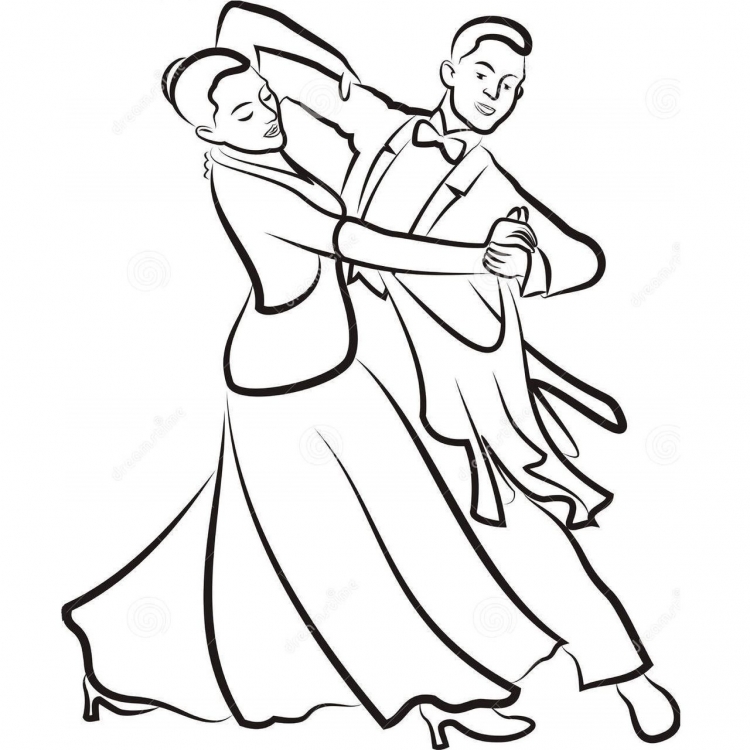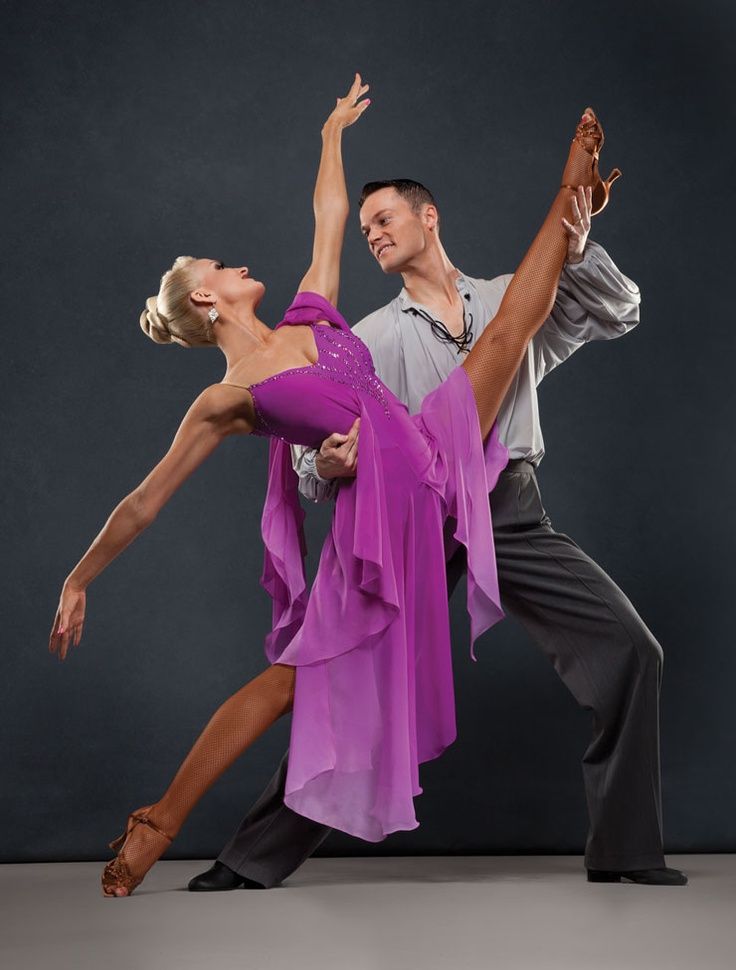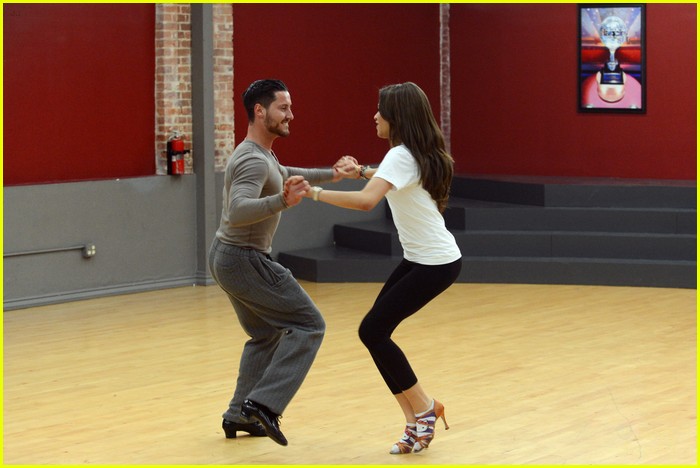How to dance valse
Learn Basic Steps For Waltz
Waltz is an elegant, nearly universal dance, perfect for weddings, or almost any social occasion. It's not as hard to learn as most people think.
- Basic steps
- Instructions & Diagrams
- Video
- Recommended Video Lessons »
Quick intro
Waltz dates back to the late 17th century Europe, but has never really been out of fashion and clearly stood the test of time. It should probably be one of the first ballroom dances you learn.
It is a smooth and graceful dance with long, flowing movements, characterized by rise & fall motion. It has a unique 3/4 timing and a simple rhythmic pattern which blends with the music. You can start waltzing very quickly by just learning the simple box step.
Basic steps
The basic step for waltz is a box step. It's named after a pattern it creates on the floor (box or square) and forms the foundation of the dance.
A box step can be divided into two parts - a forward half box and a backward half box. Each half box has three steps - a step forward or backward, a step to the side, and a step to close the feet together.
The leader starts with the left foot and executes a forward half box, followed by a backward half box. The follower performs the opposite – she starts with the right foot and executes a backward half box, followed by a forward half box.
The basic box step pattern uses three counts - slow, quick, quick, which is repeated twice to create the box step. Timing is 1,2,3,1,2,3 or 1,2,3,4,5,6.
Instructions & Diagrams:
When dancing waltz someone has to lead and someone has to follow. Usually the man will lead and the woman will follow.
Men's Steps:
- Step forward with the left foot
- Right foot step sideways to the right
- Bring your left foot next to your right foot
- Step back with the right foot
- Step back sideways with the left foot
- Bring your right foot next to your left foot
Lady's Steps:
- Step back with the right foot
- Left foot step sideways to the left
- Bring your right foot next to your left foot
- Step forward with the left foot
- Step forward sideways with the right foot
- Bring your left foot next to your right foot
Video
In this video Leon and Kim will show you the basic box step. You will also get important tips on rise & fall movement which characterizes this dance:
You will also get important tips on rise & fall movement which characterizes this dance:
more videos »
Once you've mastered the basic box step, it's time to start rotating that box. It will usually be rotated to the left (counterclockwise), so it's called the Left Box Turn. It's quite simple: with each half box, you turn 1/4 of the turn to the left. After two boxes (or four half boxes) you will complete the turn and end up where you began. Then start all over again.
Ok, so now that you know the basic box and how to rotate it, lets continue with basic progressive. Here, as the name implies, the leader will always be moving forwards and the follower backwards. This will enable you to move around the dance floor instead of just dancing on the spot. Here is a clip from Learn & Master Ballroom Dance course that will show you in detail how it's done:
Where to go next?
Now that you know the basics, what's your next step (pun intended ;)? To go to the next level, we recommend one of the video training programs. Here are our recommendations »
How To Waltz Dance For Beginners
Learn how to Waltz dance for beginners in this starter guide.
Table Of Contents:
What is the Waltz?
How To Count The Waltz
Waltz Basic Steps (Box Step) – Video
Progressive Basic Step – Video
2 styles of Waltz
What is the Waltz? Slow Waltz Character/History:
The Waltz dance is one of the classiest Ballroom dances with an emphasize on “rise and fall” and smooth movement across the dance floor. The Slow Waltz Originated in Vienna, Austria and was soon the go to dance at various Ballrooms and parties.
It is a dance that has a very elegant and soft character to match the classical music that often accompanies it. This dance has figures that are in one place such as the box step (taught below), as well as figures that travel around the floor such as the progressive basic step (taught below).
This dance has figures that are in one place such as the box step (taught below), as well as figures that travel around the floor such as the progressive basic step (taught below).
It can be danced to classy songs like “Appassionata” by secrete Garden and “The Sweetheart Tree” by Johnny Mathis.
How To Count The Waltz:
The way you count the Waltz is: “1,2,3” – “1,2,3” – Each beat is even. The Waltz has a 3/4 time signature which is different than many of the other social dances like Rumba or Foxtrot that have a 4/4 structure.
Check out the 2 Waltz steps below:
Basic Waltz Dance Steps (The Box):
Summary of Waltz Basic Steps (Box Step)
Men:
Fwd with left foot
Side with right foot
Close left foot to right foot
Back with right foot
Side with left foot
Close right foot to left foot
Women:
Back with right foot
Side with left foot
Close right foot to left foot
Fwd with left foot
Side with right foot
Close left foot to right foot
Pro Tip:
One of the keys to make your Waltz look better is to do “rise and fall” through out. In general you lower on count “1”, and go up on count “2”, then lower at the end of count “3”. Try it out!
In general you lower on count “1”, and go up on count “2”, then lower at the end of count “3”. Try it out!
Now that you learned how to Waltz in place with the box, you need to learn how to travel around the room since Waltz is a traveling dance.
Men:
Fwd with left foot
Side with right foot
Close left foot to right foot
Fwd with right foot
Side with left foot
Close right foot to left foot
Women:
Back with right foot
Side with left foot
Close right foot to left foot
Back with left foot
Side with right foot
Close left foot to right foot
2 Popular styles of Waltz:
American Style: The American style Waltz originated in the United States and has moves that are done in closed-hold, as well as moves that are done in open-hold. The open-hold moves are what distinguish this style from the International style.
The open-hold moves are what distinguish this style from the International style.
International Style: This style of Waltz is danced in both the USA and Europe. All the Waltz moves in this style are done in closed-hold. The International style is also often done competitively.
Want More Dance Lessons?
We offer a membership that includes access to 300+ Ballroom and Latin dance videos online. Including American & International style videos.
Membership Info & Registration
Want More? Learn more Waltz dance steps:
More Waltz dance lessons
Get More Dance Lessons:
How To Cha Cha Dance
How To Swing Dance
How To Rumba Dance
Beginner guide to Ballroom dancing
Salsa Basic Steps
How To Dance Bachata
How To Dance At A Wedding
List of Ballroom dance styles
Any Questions? Please leave your comments below…
How to learn to dance the waltz
Waltz! And now light vapors are already spinning, spinning, swiftly and smoothly sweeping one after another. Start learning to dance, and become more slender, dexterous, fit. You will not touch the corners and jambs ... But does this happen to you sometimes? Confess! Your step will become light, springy, you will straighten your shoulders, learn to keep your head straight.
Start learning to dance, and become more slender, dexterous, fit. You will not touch the corners and jambs ... But does this happen to you sometimes? Confess! Your step will become light, springy, you will straighten your shoulders, learn to keep your head straight.
Be sure to learn to dance, and we will help you.
WE DANCE THE WALTZ
To learn how to waltz, it is enough to know two movements: the right turn and the "track". The "track" is quite easy to learn, so the most important thing is the turn. We will start with him. A full turn of the waltz (360 degrees) consists of two parts and is performed for two measures. The musical size of the waltz (one measure) is 3/4. This means that the waltz rhythm is a continuous repetition of counting: one, two, three; one, two, three... Before starting to learn to dance in pairs, everyone must learn the waltz turn on their own.
FIRST HALF TURN
(Count: "one, two, three")
Become a face along the movement, or, as they say, along the line of dance. Put your feet in the third position, that is, the heel of the right foot is attached to the middle of the foot of the left and the socks are turned to the sides, as shown in the figure. This extended position of the legs is called eversion. In the waltz, the legs must be in an eversion position at all times.
Put your feet in the third position, that is, the heel of the right foot is attached to the middle of the foot of the left and the socks are turned to the sides, as shown in the figure. This extended position of the legs is called eversion. In the waltz, the legs must be in an eversion position at all times.
So let's get started. Take a step forward with your right foot, starting to turn to the right (count: "one" - the first quarter), then step with your left foot, turn to the right even more, and now you are standing with your back along the dance line (count: "two" - the second quarter), pull the right leg to the left in the third position (count: "three" - the third quarter). This is the diagram of the first half of the turn.
Do it several times in a row, turning exactly 180 degrees each time. In order for this scheme to turn into a half-turn of the waltz, rise to the half-toes on the second step and lower at the end of the third step from the half-toes to the soles of both feet, ending the movement with a smooth, slightly noticeable squat. All steps should be light and gliding.
All steps should be light and gliding.
SECOND HALF TURN
(Count: "one, two, three")
You stand with your back in the line of dance. Legs in third position. Take a step with your left foot to the side (count: "one" - the first quarter), body weight on the left foot, there is no turn yet. Bring the right foot with the inside of the toe behind the heel of the left, that is, inverted (count: "two" - the second quarter), slowly turn on the half-toes of both legs to the right, so as to be facing the line of dance (count: "three" - the third quarter ). Check that the rotation should be swarmed 180 degrees. What we have now learned is the scheme of the second half of the turn.
Do this pattern again, but with the following conditions: the first step should go diagonally back and to the side (more to the side than back). At the same time, make sure that the left leg maintains an eversion position. On the second step, bringing the right foot with the toe behind the heel of the left, put it close (but not close, otherwise you will not be able to turn), so that the turn without additional prefixes ends in the third position.
In the final form, the turn is performed as follows: after the "skid" it is necessary to turn very smoothly, without any effort of the body, on half-fingers. Body weight is greater on the left leg. On the count of "three", as in the first half of the turn, you should lower yourself from the half-toes and slightly noticeably, gently sit down.
HOW TO MAKE A FULL TURN!
Face in line of dance with feet in third position. Make the first half of the turn (1st measure - count: "one, two, three"). You ended up with your back in the line of dance. Continue turning to the right, doing the second half of the turn you just learned. So you have returned to the starting position (2nd measure - count: "one, two, three"). Now you can start all over again: the first half, the second, the first again, etc. Practice well. First, about thirty times, turn very slowly, counting, then faster, even faster.
IT IS EASY TO TURN BY ONE, IT IS HARDER TO TURN IN A PAIR
And this is true at first. Because mistakes, insecurities of one are transferred to another, and you go astray.
Because mistakes, insecurities of one are transferred to another, and you go astray.
Team up for a waltz. The girl should face in the line of dance, the boy - with his back. This means that the girl will start the waltz from the right foot forward (from the first half of the turn), the boy starts from the left foot to the side (from the second half of the turn). Then the girl dances the second half of the turn, the boy the first, and so on. All the time at the same time they perform different halves of the turn.
Do not immediately try to spin at a fast pace.
Pay special attention to whether you put your foot in the first step of the second half of the turn and whether the first step from the right foot has shortened in the first half.
Remember that, circling in a waltz, you must always move forward along the line of dance. And for this, for each beat, you must turn exactly 180 degrees. The division of the waltz turn into two halves is purely arbitrary and should not affect the smooth and continuous character of the dance.
WE GO TO THE "TRACK" OF THE WALTZ, AND THIS MEANS THAT THE MOST DIFFICULT IS ALREADY BEHIND
You can't dance the waltz, just spinning in one direction. This is both tiring and makes the dance monotonous.
This is where the "track" is needed.
Stand one at a time, facing along the line of dance and march to the music of the waltz, taking one step for each count (each quarter). This is unusual, but not difficult if you carefully listen to the music.
Walk again, but now on half toes. The knees are tucked up, but not tense. The steps are small.
Now try for every third count to gently lower yourself from the half-toes of the forward leg to the entire foot. At the moment when you lower yourself from the toes, the other leg is simultaneously brought forward.
"Track" is played easily and smoothly. One "track" of the waltz takes three counts ("one, two, three" - one beat). Be careful not to take a big step on the first count. All steps of the "track" are the same size. In pairs, the partner most often makes a track, stepping back and starting with the left foot, the partner moves forward and starts with the right foot.
In pairs, the partner most often makes a track, stepping back and starting with the left foot, the partner moves forward and starts with the right foot.
At first, it is best to build the whole dance like this: combine two full turns of the waltz (four measures) and four measures of the "track". In the future, you will spin more and less often go to the "track". So, for example, it is convenient to combine twelve measures of rotation and four measures of a track.
Well, how to turn left? Exactly the same as to the right. All the same rules apply, but, of course, you start on the other foot and turn to the left. However, my advice is not to rush to the left turn. Move on to it only when you are good at circling to the right.
You might also be wondering how to avoid dizziness. The most important thing is habit, but there is also a little secret: do not look around while dancing, and even more so at the floor or ceiling. Look only forward along the line of dance.
So, dance the waltz!
🤬 How to dance the waltz? | Interesting facts
Dancing is the best way to express your feelings and get even closer to your loved one. Waltz is the most romantic pair dance. That is why every self-respecting person should be able to dance the waltz.
Waltz is the most romantic pair dance. That is why every self-respecting person should be able to dance the waltz.
How to learn to dance the waltz?
To learn how to dance this beautiful dance smoothly and beautifully, it is best, of course, to start from childhood. The child's mind grasps everything new much faster, and the child's body is more pliable to new loads and movements.
Waltz is included in the ballroom dancing program
Thus, if you have a child, it is better to immediately send him to the ballroom dancing section so that in a couple of years you can admire the performances of your child. So your baby will get used to discipline and beauty from childhood, and you can be proud of his successes and achievements.
If you are eager to learn how to waltz yourself, you will have to accept the fact that you will need patience. The main thing is not to lose perseverance and train. Remember that at first something may not work out, but over time everything will definitely work out, and you will be free to dance the Viennese waltz.
Remember that at first something may not work out, but over time everything will definitely work out, and you will be free to dance the Viennese waltz.
The ability to dance the waltz was highly valued in high society
It is best to sign up for ballroom dancing courses. Experienced instructors will help you integrate into the dance environment and help you learn all the necessary movements as quickly as possible. Be sure to choose your courses carefully so as not to be disappointed. Ask friends and acquaintances which club has the best reputation. Many clubs have open free lessons at the beginning of the season, where you can get to know the teachers, the school and find out the schedule.
If you do not like or are embarrassed by noisy companies, you can use the services of a private teacher. Of course, this is not the cheapest pleasure, but a calm environment will help you relax and learn the material faster.
How to dance the waltz
For those who are especially busy, and maybe a little lazy, the best option would be to learn to dance at home.
How to learn to dance the waltz at home?
So, if you dream not only of circling around the hall in a beautiful outfit, but also of feeling the music, as well as correctly performing all the movements, then it is best for you to contact a private instructor. As we noted above, this is very convenient. In addition, a personal teacher will be able to objectively assess your abilities and characteristics, and teach you how to dance.
To get the most out of your private lessons, start by learning to dance. It will be useful to get acquainted with the features of such types of waltz as: Viennese, Friendship, French, Boston, Figured. Find out how and when they originated, where they were danced, what are the differences.
Waltz is chosen as the first dance by newlyweds
To learn how to dance the waltz, like any other dance, you need to learn to feel the music. Get a player and download waltz music. Listen to it in your free time, trying to imagine the movements that can be superimposed on this music.
Listen to it in your free time, trying to imagine the movements that can be superimposed on this music.
You can also use instructional videos to learn how to waltz. So we can gradually master the skill of dancing in a calm home environment. In addition, the video allows you to repeat the necessary part of the lesson if necessary. Yes, and it costs much less, because you can download the lesson on the Internet. If you buy a CD with lessons, it will cost you less anyway.
Perhaps one of your friends or relatives knows how to dance this dance. Ask him to teach you, or to correct the technique. In any case, practice as often as possible at home, go to open classes or events where you can work out with new partners once again.
Viennese waltz: video lesson
To learn how to dance the waltz, you need to immerse yourself in the atmosphere of the dance. This will set you in the right romantic mood. If this becomes your real hobby, success in learning the waltz will not be long in coming.
How to dance the waltz?
Before you start learning the Viennese Waltz, it is important to prepare yourself and your body. To do this, you need to tune in and start training the body. So, try to do a warm-up every day, preferably to the music of the Viennese waltz. This will set you in the right mood, you will have time to get used to the music and rhythm.
Try to perform all movements smoothly, to the beat of the music. Sudden movements can harm you, especially if you are not used to it. Pay special attention to stretching, especially the hands and socks. To do this, perform lifts on toes, rotations. Try also to stretch your fingers, and keep your hands at shoulder level. In no case should the shoulders be raised in the dance, it looks ugly.
Waltz - partner dance, a lot depends on your partner
Of course, the ideal option would be to learn to dance the waltz together with a partner.











